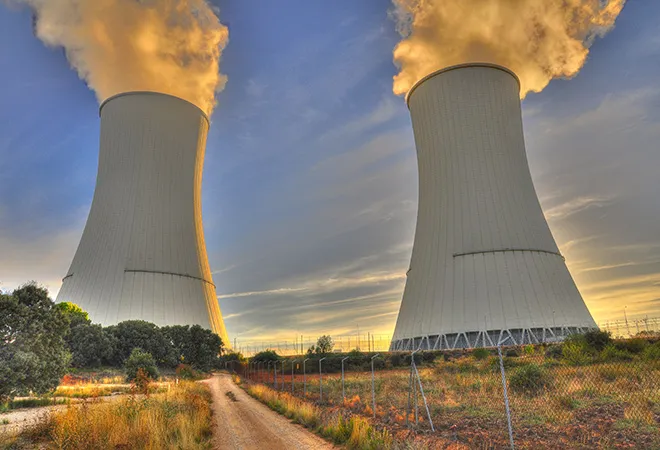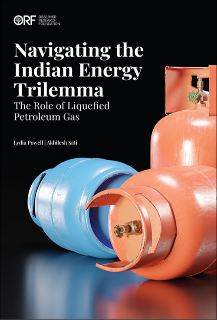As the US, under President Donald Trump, vacates its leadership position on climate change, new actors have emerged to take its place. Both China and India have taken positive steps to curb national carbon emissions, and are well ahead of the goals set under the Paris Agreement. India in particular has made a push towards a low carbon economic transition by expanding its renewable energy capacity by 350% over the past 13 years and plans to double its existing renewable energy capacity by 2022.
While its push towards renewable energy is important, India must continue to take a holistic approach towards climate change. In addition to investing in solar and wind projects, it should also look at investing in clean coal plants, developing alternative energy sources, and managing its upcoming urban transition in order to curtail carbon emissions while achieving its economic goals.
Despite the recent advent of renewable energy, India is still powered by coal, with 77% of electricity generation coming from coal plants. The future outlook of the country similarly shows that coal will continue to dominate the Indian power sector, with best case scenarios showing that coal will be responsible for 60% of electricity generated in 2040. By themselves, these numbers are not necessarily problematic, but when put into the context of the conditions plaguing the coal sector, issues start to arise.
Domestic Indian coal happens to be of a poorer quality than comparable international varieties. Additionally, coal plants in India are extremely inefficient — India is currently ranked third worst in the world in coal-plant efficiency. These circumstances lead to larger volumes of coal being burned to produce necessary energy benchmarks, which consequently lead to excessive carbon emissions. Coal will be absolutely necessary for India’s continued economic growth, but by making the coal cleaner and investing in plants with better technology, India can help curb some of the coal-related carbon emissions.
India’s energy mix at the moment can best be described as an all-or-nothing approach — with 92% of its electricity coming from either coal or renewable energy sources. Natural gas and nuclear energy make up the remaining 8%, but have not yet been able to gain a significant foothold in India’s power sector. For the natural gas industry, the main issue is lack of domestic infrastructure. India currently has a natural gas pipeline network of 15,000km, most of which has been developed in the northern and western parts of the country. To put this in context, the US has a natural gas pipeline of 500,000km. Simply put, there is no way for natural gas to reach its intended consumers in India.
The nuclear energy sector also has some barriers for entry in India. The recent bankruptcy of Westinghouse and the problems faced by Areva in Finland and France have created an uncertain climate for international nuclear energy corporations. Combined with the disincentives provided by Indian liability laws and the difficulties in conducting business faced by foreign firms, India has to rely on domestic capabilities for its nuclear energy needs. Here, the problem is that India currently lacks the materials, expertise, and supply chain needed to commission enough reactors to make a significant impact on the country’s energy mix. While the recent decision to commission 10 pressurised heavy-water reactors (PHWR) nuclear plants by the government is a start, nuclear energy will still only generate 6-7% of India’s electricity once the plants are operational.
In order to curb its reliance on coal and fulfil its obligations under the Paris accord, India must look into further developing alternative energy sources. Investments in its natural gas infrastructure and its domestic nuclear energy manufacturing capacity could hold the key for a carbon-free future.
When talking about climate change, the focus tends to be only on the power sector. It is important to recognise that only 44% of Indian carbon emissions come from electricity generation. The transportation sector accounts for 10% of domestic greenhouse gases, and waste management processes are linked to 3.5% of Indian carbon emissions. An excellent amalgamation point for these emission sources are the urban centres in which much of the world tends to live. It is here that India has another prime opportunity to reduce carbon emissions.
India is in the midst of a significant urbanisation movement powered primarily by a shift away from the traditional agricultural sector and an increasingly younger population. It is expected that India’s cities will hold 600 million new inhabitants by 2040. As they expand to welcome their new residents, it is important that urban growth is planned in a manner designed to reduce emissions from both the transportation sector and waste management processes.
If India wishes to truly conduct a low carbon economic transition, it needs to move towards clean coal technology, develop alternative fuel sources and manage its urban transition, while continuing to invest in renewable energy. It is important, however, to contextualise Indian’s climate change policies against its broader economic situation. India is still very much an emerging economy with a per capital gross domestic product of $1,598 and 12.8% of its population living in extreme poverty. Despite certain shortcoming in taking a holistic approach towards a low carbon economic transition, India has still made substantial commitments towards upholding its global moral obligations under the Paris agreement. It is to be seen whether the rest of the world follows in India’s footsteps.
This commentary originally appeared in Live Mint.
The views expressed above belong to the author(s). ORF research and analyses now available on Telegram! Click here to access our curated content — blogs, longforms and interviews.




 PREV
PREV


